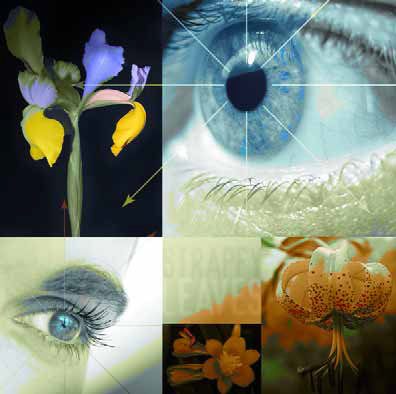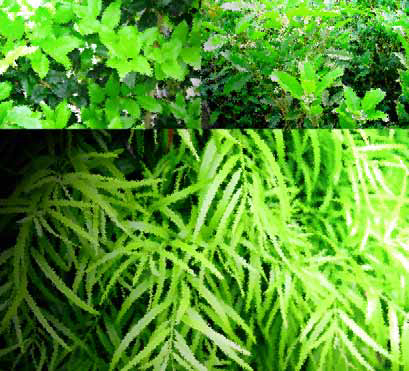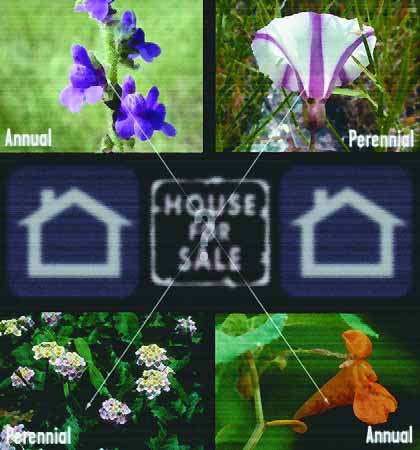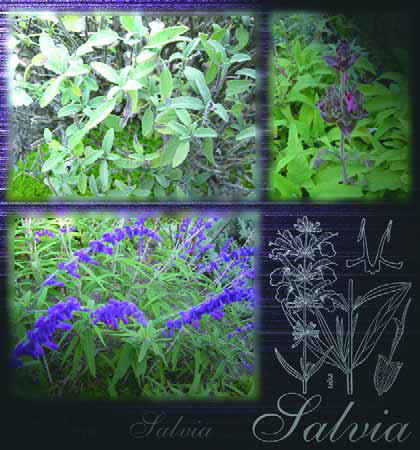plant selection
For centuries, the Mediterranean gardens of Italy, France, Greece and Spain have put sun-thriving plants on beautiful display in dry environments. The Greek isles flourish with wildflowers whose colors become more vivid against the bleached background, while Spanish gardens combine the fragrant blossoms of citrus trees and the fragile pink blooms of Almond trees with open, arid landscapes. Italian and French gardens present more formal atmospheres, incorporating boxed and trimmed trees with trellises and pergolas draped with vines. Each area has its distinct style, but the main elements of these gardens are the same, with the hot sun being the primary common factor. As is revealed, however, in Designing and Creating a Mediterranean Garden by the English artist Freda Cox, it is possible to cultivate
As is true of many things we savor in our lives, our perception of texture is filled with subtlety and nuance. This is particularly true in gardens, where space, form, color and texture dance together to create our experience of a living entity and, for designers and installers, of the envisioned entity as well: We start by defining the entity's function and style - make it an outdoor room, a neoclassical knot garden or a meditative space - then layer hardscape and plant materials to engage the five senses one by one or all at once. Texture plays a large role in creating this sensory engagement: It's the lure that invites observers to pause and linger, to breathe deep and compose themselves within the environment. In that sense, texture is the twin of form and the companion to color in the triad of basic garden relationships. Texture also involves an
Done properly, planting design is much like painting: It involves setting frames, backgrounds, screens and stages in a garden, thus creating a living scene with the plants as features of the composition. Just as a painter adds layers of colors to a canvas to create a work of art, the garden designer combines plants for visual delight. But the garden designer has an advantage in that scent, texture, motion and even taste can be experienced in gardens in ways that can only be suggested by a painting. (As a former painter, I can attest to this point and credit my artistic adventures in
Beauty enhances our lives by changing our perceptions, and what we do as landscape professionals plays an important part in setting that perceptual stage. As the mystic poet Rumi wrote in the 13th Century, "Beauty surrounds us, but usually we need to be walking in a garden to know it." The steps we take in moving to and from our homes are important in that context, both for us and for our clients: These daily treads affect our perception of the world and influence our moods. While we can't always change the part of the journey that continues beyond the garden gate, we can do much to shape the sense of welcome, beauty and ease by
Most of my clients don't know a Pittosporum from a Loropetalum - nor would I expect them to. Unfortunately, however, this often leaves me to describe plants to them, a process that often makes me feel like I'm reenacting that television commercial where the homeowner tries to mimic the creature seen crawling across the kitchen floor for an exterminator: I'll stand there with my arms up or out, attempting to look like the botanical specimen I'm suggesting for use in their garden. One of the easiest groups of plants to describe in this or any other way is a collection I call the strappy-leaf plants. I didn't make up the term, and I'm sure many of you have also used it yourselves to describe plants with foliage that looks like straps - generally long strips that emerge from a central clump and arc up, sometimes flopping over to create
Most of my clients don't know a Pittosporum from a Loropetalum - nor would I expect them to. Unfortunately, however, this often leaves me to describe plants to them, a process that often makes me feel like I'm reenacting that television commercial where the homeowner tries to mimic the creature seen crawling across the kitchen floor for an exterminator: I'll stand there with my arms up or out, attempting to look like the botanical specimen I'm suggesting for use in their garden. One of the easiest groups of plants to describe in this or any other way is a collection I call the strappy-leaf plants. I didn't make up the term, and I'm sure many of you have also used it yourselves to describe plants with foliage that looks like straps - generally long strips that emerge from a central clump and arc up, sometimes flopping over to create
It's that time of year when our thoughts begin turning to the beautiful colors of the fall - and the subsequent bareness of winter. Whether you're in the coldest northern reaches or enjoy the relative warmth of the Sunbelt, we all are aware that fall is a transition to a time when the annuals will fade once and for all and the deciduous plants will drop their leaves. But I propose that it doesn't have to be so - or at least that we can minimize the seasonal holes in our gardens through thoughtful use of evergreen trees and shrubs. These are the most abundant of all plant types, after all, and the bones of
Please forgive me as I revisit themes from a couple of my past columns. One was written earlier this year on why we do what we do, while the other was published several years ago - back when I first began writing for WaterShapes - and was all about a subject dear to my heart: roses. Recent events in my family have given me time and the need to sort through the past, and the experience has deepened my appreciation of gardens, their emotional power and how they come to reflect our clients and ourselves. I'd like to share this process of discovery to define what I see as the essence of what we all try to do as professionals - and encourage all of you to
I recently received a call from a Wall Street Journal reporter who was doing a feature on preparing a home for sale. She told me she wanted a landscape designer's perspective on how homeowners should spend their money to get the most bang for the buck and really put me on the spot in the process: Her deadline was the following morning, and I had to do some fast thinking when her call came in at 8 pm. It immediately occurred to me that I always ask homeowners whether they are landscaping for
In preparation for creating plant palettes for my projects, I typically spend hours poring over my Sunset Western Garden book. I thrive on finding plants I haven't tried before, and I look especially for those I haven't seen in anyone's garden. Before I'll try any of these discoveries out on someone else, however, I'll pick up a sample plant and bring it home to my own garden - part science project, part proving ground to see how the plants perform away from the nursery. I've had many successes through the years and probably as many failures, but I learn something from every attempt. What I sometimes find are plants that are





















